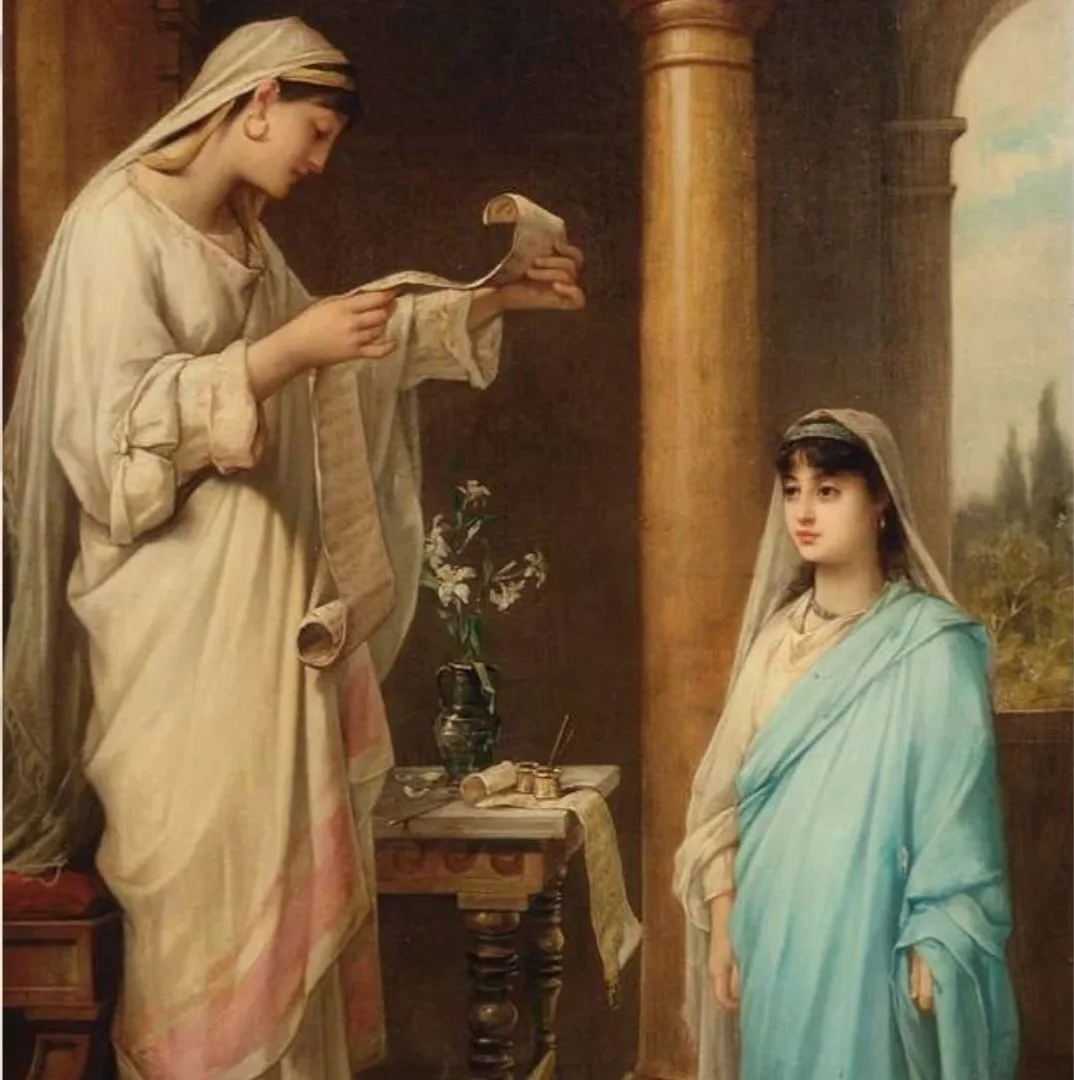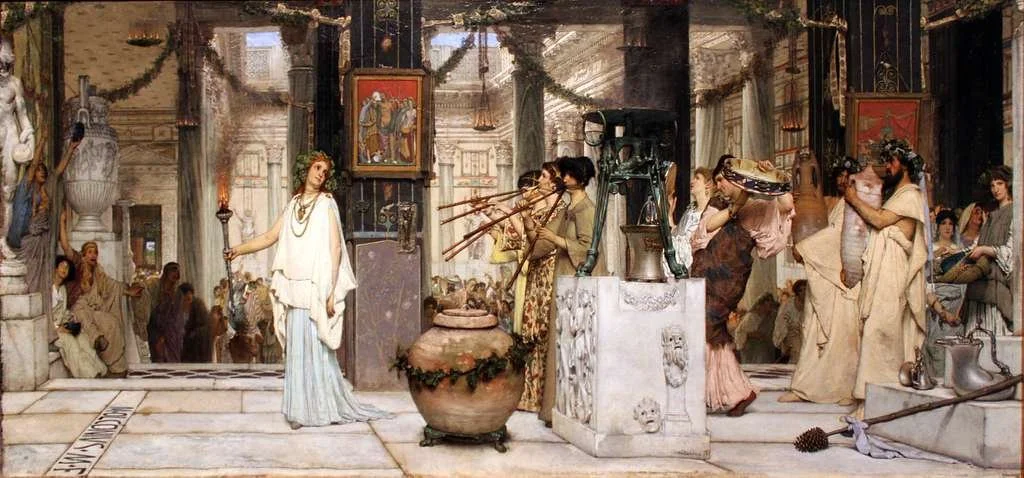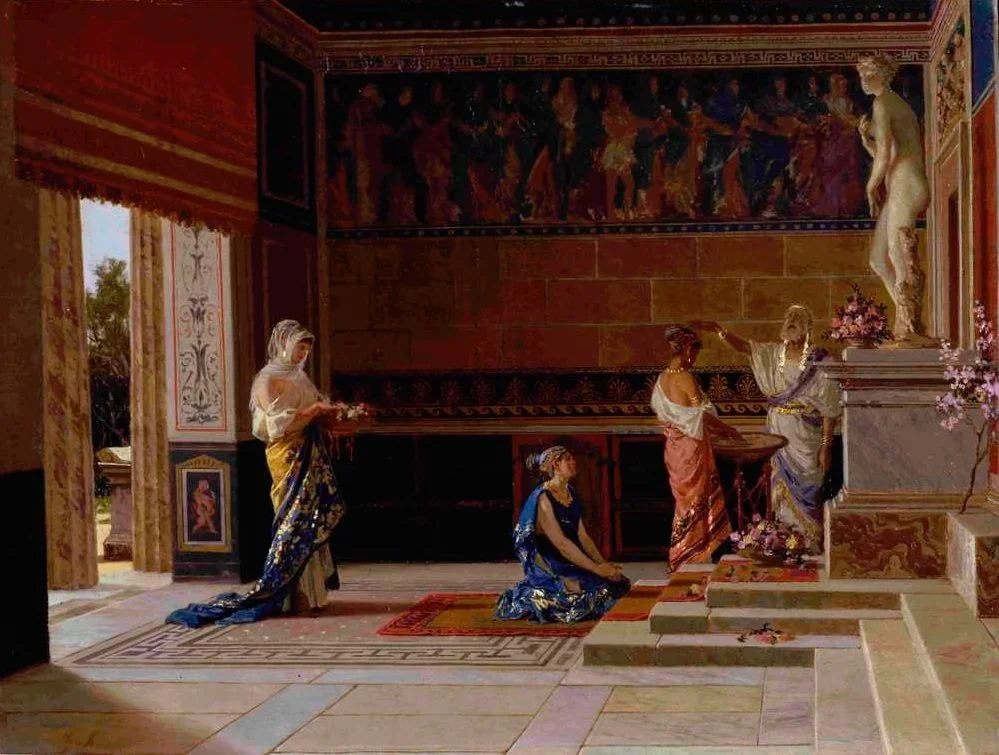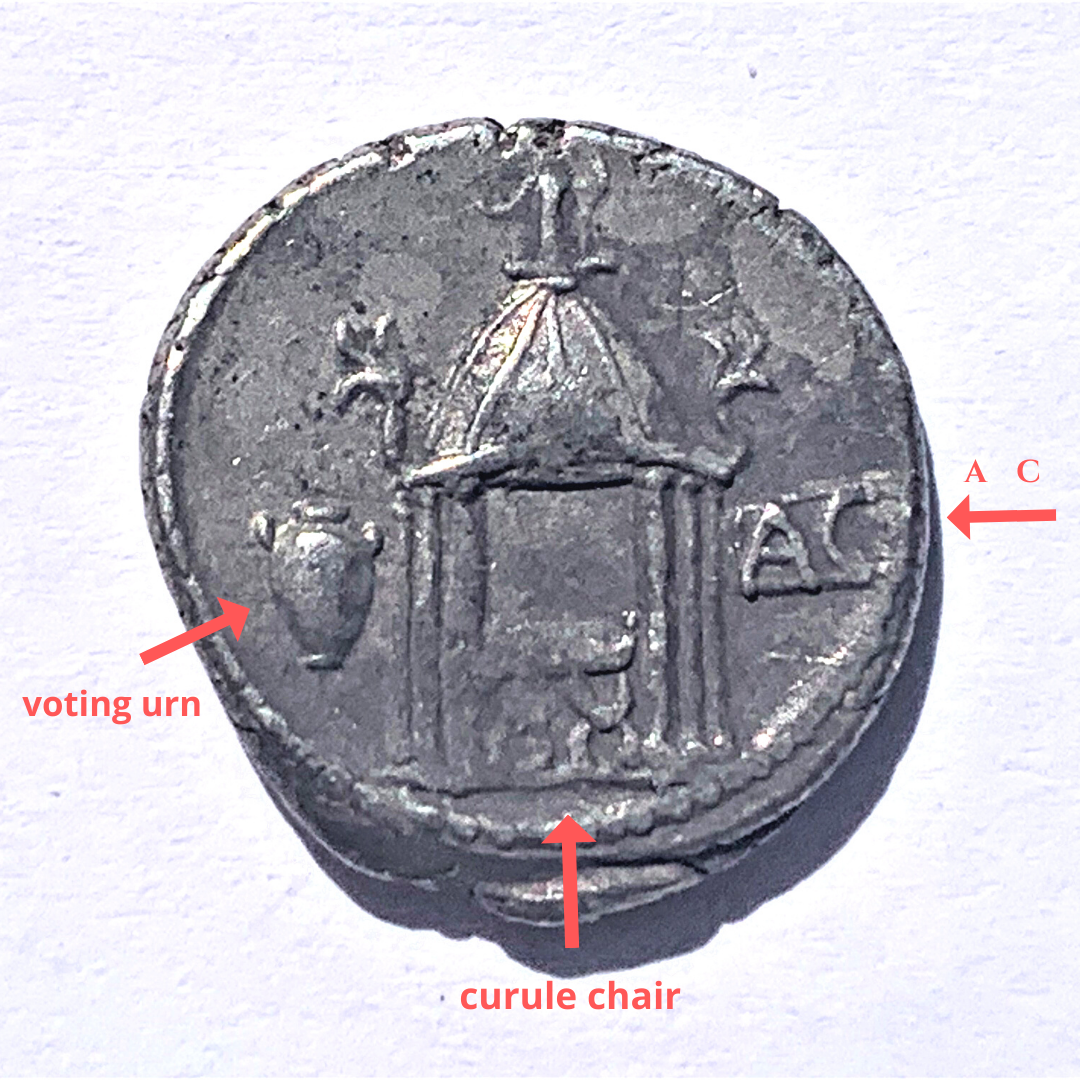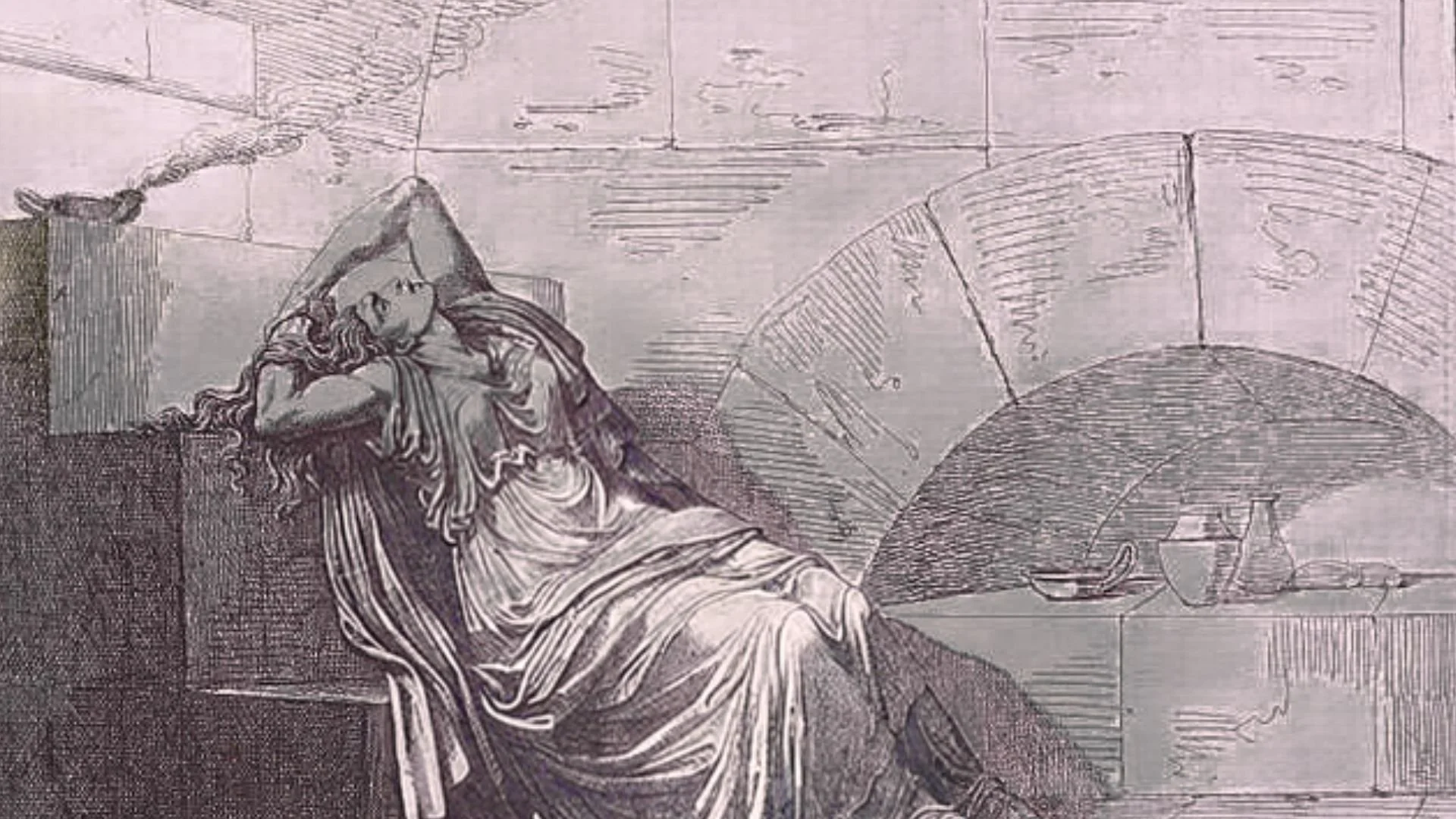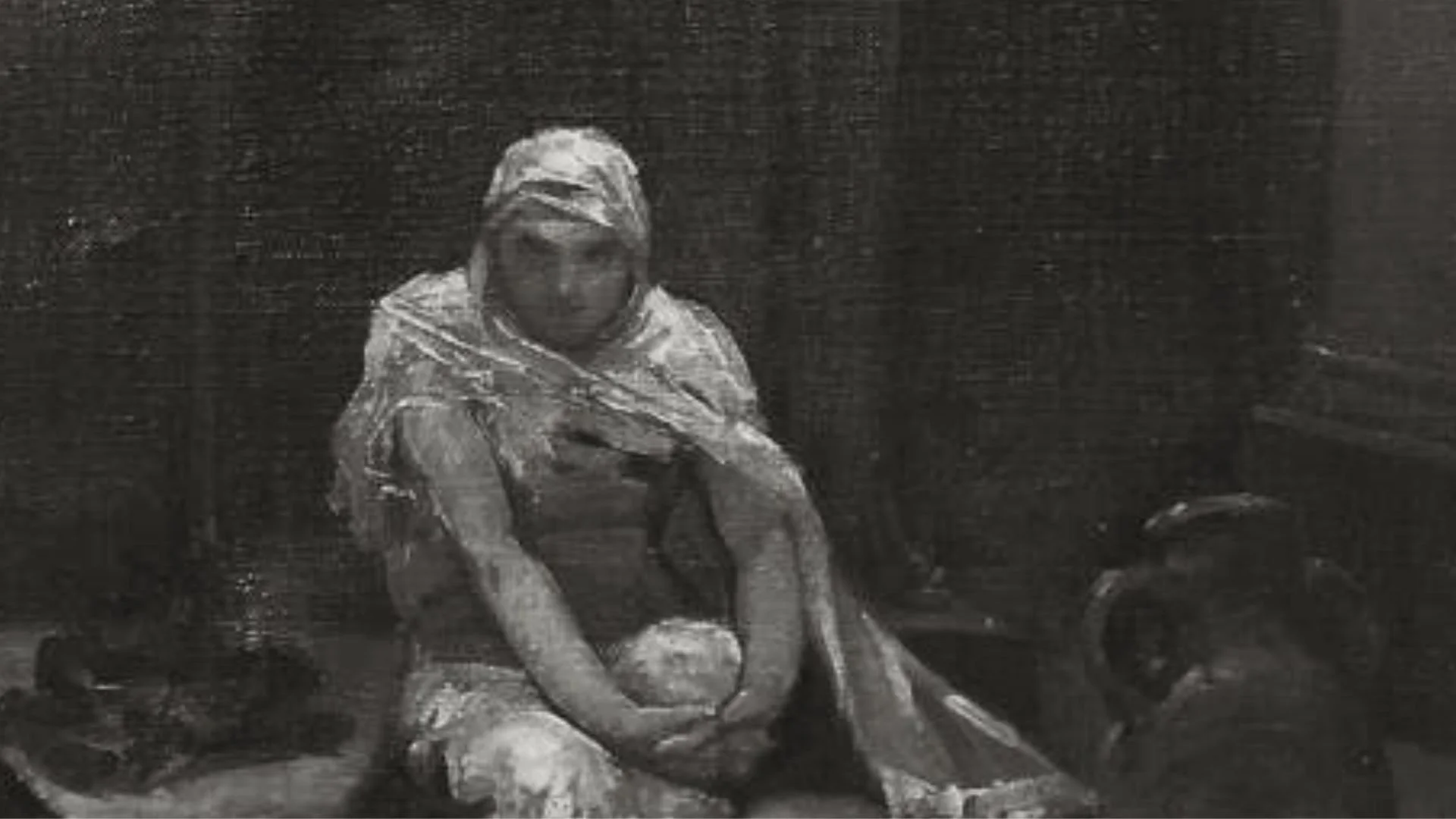The Pros—and Cons—of Being a Vestal Virgin
The Vestal Virgins were priestesses of the ancient Roman goddess named Vesta. Their job was to keep Vesta’s sacred flame burning, at all times, in the goddess’s temple. For the ancient Romans believed that if Vesta’s fire went out, Rome would lose the favor and protection of the gods. Chosen as children from the best families in Rome, Vestals took a 30-year vow of chastity to serve the virgin goddess.
Now, you might at first think, “That sounds awful!” But don’t jump to conclusions. Because here, I’ll present the upsides of being a Vestal Virgin. Because there were some really big ones.
The Pros of Being a Vestal Virgin
1. Your father couldn’t marry you off as a young teenager
Now, it might be that some girls didn’t mind get married young, particularly if they had a say in who they were marrying, and if their husband was similar in age. But if your father decided to marry you off to one of his middle-aged friends or business associates, you probably had little choice but to comply in the end. That’s because the law of patria potestas gave a father the power to arrange a marriage for his daughter.
Since Vestal Virgins were taken into the order at a young age, between six and ten years old, they just didn’t have to worry about this.
2. No bad husbands
What’s worse than marrying, only to discover you have a dud? What if he’s a carouser, or a spender, or a drinker... or all three? Now, we know that the Roman matron had her own ways of advocating for her own best interests in the household and beyond, even legally, but in the end, a woman’s happiness depended largely on her husband’s nature. As a Vestal Virgin, you didn’t have to roll this dice.
3. Luxury living
The Vestal Virgins lived in large, multistory home in the Roman Forum, next to the Temple of Vesta. It was a beautiful home with fancy frescos and tile floors, hypocaust heating for the bath, a large central courtyard with decorative pools, and private apartments for the priestesses. Best of all, the home came with staff and servants—cooks, cleaners, scribes. While a Roman wife was busy cooking, cleaning and spinning wool, a Vestal Virgin was likely having a plate of the finest foods placed in front of her by a servant.
4. All-expenses paid… and then some
In addition to the fancy free room and board that came with the Vestal’s duty, a Vestal Virgin was paid a stipend by the state. That meant she had money in her pocket... her own money, to spend on whatever she wanted.
5. You’d probably live a lot longer
As an important priestess of the state religion, it was in Rome’s best interests to keep the Vestal Virgins healthy. In addition to a relatively easy life—sure, tending a fire can be tiresome, but it isn’t exactly hard labor—a Vestal Virgin could expect to eat the best foods, drink the best water and wine, and have access to the best medical care. These benefits of an upper class lifestyle certainly contributed to longevity.
6. Front-row seating
What’s worse than getting tickets to the chariot races, only to get there and have the most awful seats in the place? The Vestals didn’t have to worry about this. Whether watching the gladiator fights at the Colosseum or the horse races at the Circus Maximus, the Vestals had premium seating, catered food and access to private latrines. Think box seats, but better.
7. An interesting life
The Vestal Order was well-staffed with novices and priestesses who rose up through the ranks and performed a myriad of duties. Priestesses spent ten years as a novice learning the ways of the Vestal, ten years tending to the fire in the temple and performing public rituals, and then the last ten years teaching and training the novices. So their duties changed throughout their tenure.
That means the idea of a Vestal Virgin languishing for 30 years in the temple, all but tethered to the hearthfire, just isn’t accurate. Neither is the idea that a Vestal lived a life closed-off from the outside world. Vestals attended banquets and sporting events, had social lives, and performed all kinds of public functions.
8. Business opportunities
Something that added even more interest to the life of a Vestal Virgin was her ability to own a business. Perhaps it was a shop that sold religious implements or jewelry. Perhaps it was a bakery, or a larger enterprise, like a vineyard. Regardless, the ability to own a business didn’t just give a Vestal another avenue to make money. It also gave her an opportunity to engage in something other than her religious duties.
10. You were respected and had influence
Vestal Virgins had a number of privileges. If their carriage was on the road, it had the right-of-way. Vestals could pardon criminals and grant sanctuary, even to important political figures. They could give testimony in the Senate, and they could use their upper-class friendships to wield influence. People bowed to them and appreciated them. Even the emperors—especially ones like Augustus and Vespasian—showed great respect to the Vestal Virgins. Priestesses had statues made in their honor. Images of Vestals were minted on coins and they were featured on important monuments and remembered in legacies.
11. A comfortable retirement
The free luxury living, the generous Vestal stipend, the business opportunities, and the various gifts and bequests that could be given to a priestess over a 30 year period… it all added up to a very comfortable retirement. And the best part is, a Vestal could retire at a young enough age to actually enjoy it. Because Vestals entered the order between six and ten years of age, priestesses had the option of leaving the order in their mid to late 30’s.
Now, a person in ancient Rome who was lucky enough to survive childhood, and especially a person who had a relatively easy life, could expect to live into their 60’s and even 70’s. Caesar Augustus, for example, lived to 75 years of age, while his wife Livia Drusilla lived to 87.
That meant a Vestal had a good 20 or 30 years to enjoy life on her own terms, with her own money. If she wanted to leave Rome and buy a villa somewhere in the country, she could do it. No doubt many did. But many probably stayed in Rome, perhaps continuing to live in or near the House of the Vestals. By the time she reached retirement, a Vestal had spent her life in the thick of things in Rome. Some were probably tired of it, but others probably couldn’t imagine doing anything else.
12. Marriage and family life
The fact that a Vestal Virgin had the option to leave the order in her mid to late 30’s, with 40 being the latest, meant that many were still young enough to marry. Considering their status and connections, they were likely appealing brides, especially to widowed men or those who had children from a previous marriage.
Yet it was a retired Vestal’s choice of whether, and who, to marry. Again, some probably did, and some probably didn’t.
As for family life, a Vestal could be content being a stepmom or the cool aunt, but having a child of her own, especially if she retired at 36 or 37, wasn’t out of the question. Although childbearing was certainly more typical in younger women—in their teens or early 20’s—it wasn’t unheard of for Roman women to give birth in their late 30’s and even early 40’s. So a retired Vestal could conceivably still have a child, though it was up to her whether she wanted to take that kind of risk or not.
So as you can see, there were definitely some upsides to being a Vestal Virgin in ancient Rome. The lifestyle and wealth, the respect, the relative independence (especially after retirement), are some big pros. But it wasn’t all sunshine and roses, and being a Vestal also came with some cons. Let’s turn to those now.
The Cons of Being a Vestal Virgin
1. No sex life
Girls were taken into the Vestal Order between the ages of six and ten, and at that time took a 30 year vow of chastity. That meant that they would remain virgins during those years that most older girls and young women were getting married. But it wasn’t just being denied the pleasures of the marriage bed, it was being denied the companionship of a husband and a partner in life during their youth.
Now, upon retirement—typically mid to late 30’s—a retired priestess could certainly make up for lost time, especially since she had the freedom to choose her own bedmate or husband; however, it wouldn’t change the fact that some Vestals undoubtedly felt lonely and deprived of sex and intimacy, of domestic life, and even motherhood, during their 20’s and most or all of their 30’s.
2. A lot of pressure
The sacred fire of Vesta that burned in the temple was an eternal flame. It had to stay burning all the time, day and night. In fact, the ancient Romans believed that if Vesta’s fire went out, or if the rites in the temple weren’t performed properly, Rome would lose the favor and protection of the gods. That could lead to all kinds of calamities—plague, famine, military defeat, even invasion. That put a lot of pressure on a Vestal priestess not just to keep the fire going, but to keep the goddess happy. The prayers and rituals had to be done flawlessly. One misspoken prayer, one misplaced strip of oak, and tragedy could strike. And it would be all your fault.
3. Being used as a scapegoat or a pawn
The temple of Vesta was a very sacred place. With the exception of the Vestalia, a festival to the goddess where Roman women were allowed to enter the sanctum, only the Vestal priestesses were permitted inside. They kept the fire going and they performed the rites and prayers to Vesta in secret.
Unfortunately, this could lead to unfounded accusations. It was all too easy for a defeated general to say, “I only lost the battle because Priestess Licinia let the fire go out!” or “I only lost because Pomponia has a forbidden lover!”
It wasn’t just defeated generals a Vestal had to worry about, either. While most emperors were generous and benevolent to the Vestal Order, some, like Domitian, were much less so.
And the worst part was, because so much of what the Vestals did was done behind closed doors, it was hard for a priestess to disprove an unfounded accusation.
4. Temptation
A Vestal Virgin was bound by her vow of chastity from childhood to her mid to late 30’s. Through adolescence, through young womanhood, to later womanhood, men were off-limits to her, and she was off-limits to men. And while there were various concoctions the Vestals used to quell desire, that’s still a lot of time to suppress not just sexual desire, but romantic interest.
You can imagine how difficult it would’ve been to have your eye on a handsome young merchant or chariot driver and maybe even develop a friendship with this man, only to have him tire of waiting for you and marry someone else. The temptation to succumb to sexual desire, or to cling to a forbidden romance, must have struck many priestesses, even if a relatively few actually gave in to it.
5. Being put on trial
A Vestal Virgin who broke her vow of chastity or neglected her duties, or who was falsely accused of doing so, would effectively be put on trial. Now, the way these trials were conducted, and how fair they were, depended on the time and the people involved. Nonetheless, this ancient Roman coin from the first century BCE depicts in cold metal the trial of a Vestal Virgin.
You can see the temple of Vesta, and inside you can see a chair. This isn’t just any old chair, it’s called a curule chair, and it quite literally a seat of power. Only men who hold certain political powers can sit in it. So it represents the authority of the state, and here, it’s basically the seat of a judge.
You’ll see on the right side of the coin, a little tablet of sorts, and on it, the letters A and C. These stand for Absolve or Condemn—the Latin words are very close to the English here, obviously.
The men who are participating in this trial are going to hear the evidence for and against the Vestal, and then they are going to vote on the Vestal’s guilt or innocence. If they think she’s innocent, they’re going to mark A and deposit the tablet in a voting urn—like the one you can see the left side of the coin. If they think she’s guilty, they’re going to mark C for condemn and put that tablet in the voting urn.
And then the judge will tally the votes... and the Vestal will either go home and try to put the whole thing behind her, or she’ll have to suffer the punishment.
Which brings us to the last and definitely the biggest downside of being a Vestal Virgin: The punishment for breaking your vow of chastity or failing in your duty to care for the sacred flame.
6. Being buried alive
A condemned Vestal Virgin faced a truly terrible fate. First, she would be whipped by the chief priest. After that, she would be gagged and transported through the city, perhaps even in a box, to an area near the Colline Gate. This area was called the Campus Scleratus in Latin, which translates to The Evil Field. And it’s just as awful as it sounds.
Here, deep in the ground below the Evil Field, there was a subterranean chamber. The mouth of this chamber was opened, the Vestal was led to the edge of it, and a ladder was extended down into the depths. The priestess was then forced to descend, rung by rung.
When she reached the bottom, the ladder was pulled up and the chamber was sealed—sealing the Vestal’s fate along with it. How long a Vestal survived... well, that probably isn’t something one wants to ponder for too long. It might’ve taken many days. Even if a priestess was sent down with a little food, a bit of water and a lit oil lamp, those small comforts wouldn’t have lasted long.
She might have slowly starved, died of thirst or suffocated. And all in total terrifying darkness.
Or perhaps the end came quicker. People are people, and the Vestals had many friends in Rome. They had long-term relationships with senators, priests, officials and aristocrats. Maybe a sympathetic priest managed to send something down with her. Some kind of poison, maybe, or even a knife.
So as not to end on a dark note, I can assure you that over the long history of the Vestal Order, only a relative few priestesses suffered this awful fate. Indeed, the pros of being a Vestal Virgin seem to have outweighed the cons.
Yet that shouldn’t ease the discomfort we feel at imagining how truly awful this dreaded fate was.



